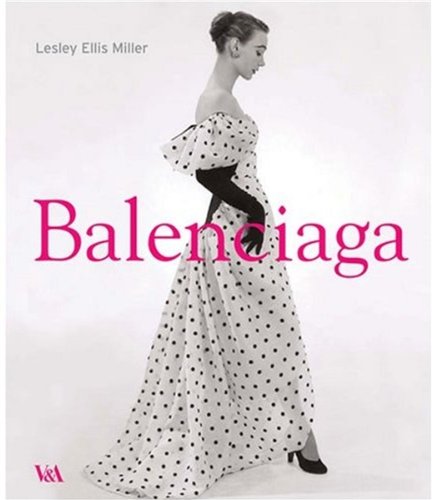You can feel the pulse of Spain beat in every garment in Balenciaga and Spain. A dress ruffle inspired by the flourish of a flamenco dancer’s bata de cola skirt; paillette-studded embroidery that glitters on a bolero jacket conjuring a nineteenth-century traje de luces (suit of lights) worn by a matador; clean, simple, and technically perfect lines that extrapolate the minimalist rhythms and volumes of the vestments of Spanish nuns and priests; a velvet-trimmed evening gown aesthetically indebted to the farthingale robe of a Velázquez infanta.
On March 26, 2011, the de Young Museum in San Francisco opens Balenciaga and Spain, an exhibition curated by Hamish Bowles, European editor at large of Vogue, featuring nearly 120 haute couture garments, hats, and headdresses designed by Cristóbal Balenciaga (1895–1972). The exhibition illustrates Balenciaga’s expansive creative vision, which incorporated references to Spanish art, bullfighting, dance, regional costume, and the pageantry of the royal court and religious ceremonies. Cecil Beaton hailed him as “Fashion’s Picasso,” and Balenciaga’s impeccable tailoring, innovative fabric choices, and technical mastery transformed the way the world’s most stylish women dressed. The exhibition closes on July 4, 2011.
The exhibition originated in 2010, in a presentation at the Queen Sofía Spanish Institute in New York City titled Balenciaga: Spanish Master. The exhibition was conceived by Oscar de la Renta, who began his career in fashion working at Balenciaga’s Madrid couture house in the 1950s. De la Renta invited Hamish Bowles to curate the exhibition. For the de Young, the themes are expanded to include twice as many objects, drawn from museum and private collections around the world and including an unprecedented loan of 30 pieces from the House of Balenciaga in Paris, which generously opened its archives of historically significant Cristóbal Balenciaga garments, iconography, and related materials. In addition to displaying five garments from the Fine Arts Museums of San Francisco’s own significant collection of Balenciaga, the exhibition features loans (some of which have never been exhibited before), from a number of important international institutions including the Metropolitan Museum of Art, the Victoria and Albert Museum in London, the Musée de la Mode et du Textile and the Musée Galliera in Paris, the Museum of the Fashion Institute of Technology, the Hispanic Society of America, LACMA, the Philadelphia Museum of Art, the Museum of the City of New York, the Phoenix Art Museum, and the Texas Fashion Collection, as well as private couture collectors such as Sandy Schreier. A special loan of seventeen pieces comes from Hamish Bowles’s own collection. The ensembles featured include garments commissioned and worn by some of the world’s most iconic tastemakers, among them Doris Duke, Baroness Pauline de Rothschild, Countess Mona Bismarck, Gloria Guinness, Thelma Chrysler Foy, Claudia Heard de Osborne, and the Bay Area’s own Eleanor Christensen de Guigne and Elise Haas.
The de Young Museum hosts a public symposium on Saturday, March 26, 2011, that examines the influence of Spain’s cultural and artistic history on the work of Cristóbal Balenciaga. The four speakers, who will present 30-minute papers on different aspects of Balenciaga’s work, are:
- Hamish Bowles, exhibition curator and European editor at large, Vogue
- Miren Arzalluz, curator of the Balenciaga Foundation
- Pamela Golbin, chief curator of the Musée de la Mode et du Textile at the Louvre
- Lourdes Font, associate professor in the department of History of Art at the Fashion Institute of Technology
The symposium will be held from 1 to 4 pm in the Koret Auditorium at the de Young. Tickets are $30 for the general public and $20 for museum members. Runway videos will be screened during breaks and intermission.
The de Young Museum, designed by Herzog & de Meuron and located in Golden Gate Park, is the nation’s fifth most visited art museum. It showcases American art from the seventeenth through the twenty-first centuries, international textile arts and costumes, and art from the Americas, the Pacific, and Africa.









1 comment so far ↓
Do you mind if I quote a couple of your articles as long as I provide credit and sources back to your blog?
My website is in the exact same area of interest as yours and my users
would truly benefit from a lot of the information you provide here.
Please let me know if this okay with you. Thanks!
Leave a Comment